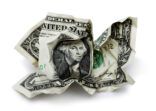Ned Naylor-Leyland, Merian Global Investors
“Gold has endured a biblical famine of seven years,” Ned Naylor-Leyland told FSA on a recent visit to Hong Kong.
However, he thinks the lustrous yellow metal is on the cusp of rebound in investors’ affections.
“Dollar strength and the prospect of US interest rate hikes have curbed demand for gold. But, the recent dovish signals by the Federal Reserve chairman should encourage gold buyers concerned that inflation will rise and hence real interest rates fall – which should lead to a weaker dollar,” said the gold-bug manager of the $325.5m Merian Gold and Silver Fund
Contrary to a common belief, the price of gold is not driven by physical scarcity or abundance, or whether or not the gold jewellery is fashionable, he explained.
Instead, the key determinant is the market’s expectations about the US dollar and the trajectory of real (that is, inflation adjusted) interest rates.
“Money is gold, and central banks recognise this,” insisted Naylor-Leyland.
He pointed out that for the decade of quantitative easing since the 2008 global financial crisis, central banks have been accumulating gold concurrent with their creation of fiat currency to boost economic activity. He estimates that the G7 countries now hold about 40% of their reserves in gold, and the G20 around 18%.
“They saw the cyclical need to store up with real money as the value of paper currencies deteriorated,” he said.
Gold has “specific properties, fungibility, historical recognition and proven returns”, he added.
Portfolio mix
Naylor-Leyland’s portfolio comprises mostly second-tier mining companies, including about 4% allocated to explorers. He has narrowed his investible universe to approximately 100 stocks, and also expects M&A activity to give the sector a boost during the next few years.
“They all operate in the Americas and Australia, where the mining infrastructure is sophisticated and the industry is well-established. We want to mitigate risks, so we avoid Africa and Asia,” he said.
The rest of the portfolio is invested in physical gold and silver, a similar proportion to the G20 central banks’ allocation of their reserves.
“Moreover, silver has a beta of two compared with gold, so the fund’s 4.4% holding can have a powerful effect on its overall performance,” said Naylor-Leyland.
However, only a tiny part of the $300bn daily turnover in gold is actually “physical”. Instead, transactions are conducted through transferable securities with so-called “gating” restrictions on redeeming the paper with physical gold – in fact, rather like fiat cash.
Of course, the biggest risk to investors is the failure of Naylor-Leyland’s expected scenario to pan out. An unpredictable Fed might well decide to hike rates higher and faster than markets expect and President Trump prefers.
This matters because Naylor-Leyland hopes eventually to increase his Merian fund’s size to “billions of dollars”.
He acknowledges the volatility of the gold price: his fund’s annualised volatility is jittery at 30.6, according to FE Analytics data.
So, retail investors should be wary of taking a big leap, and could instead consider the fund as one possible way to diversify their assets, allocating between 2% and 5% of their investments.
Comparative performance of Merian Gold and Silver Fund
|
*3-year cumulative return % |
Annualised Volatility % |
Positive weeks |
Negative weeks |
|
| Merian Gold and Silver Fund |
13.20 |
30.61 |
79 |
75 |
| Equity Commodity Sector |
13.59 |
18.78 |
84 |
70 |
| FTSE Gold Mines Index |
15.66 |
29.71 |
78 |
76 |
*since launch of Merian fund on 8 March 2016
Source: FE Analytics. In US dollars
Merian Gold and Silver Fund vs Commodity Sector Average and FTSE Gold Mines Index


















